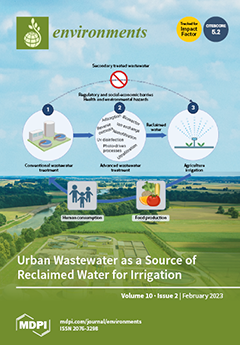Agroecosystems, accounting for more than one-third of arable land worldwide, play an essential role in the terrestrial carbon (C) cycle. The development of agricultural practices, which maximize soil C sequestration from the atmosphere, is receiving growing attention due to the recognition of agroecosystems’
[...] Read more.
Agroecosystems, accounting for more than one-third of arable land worldwide, play an essential role in the terrestrial carbon (C) cycle. The development of agricultural practices, which maximize soil C sequestration from the atmosphere, is receiving growing attention due to the recognition of agroecosystems’ great potential to serve as sinks of atmospheric carbon dioxide (CO
2). In particular, cover crop and soil amendment applications are generating much interest in mitigating climate change and enhancing agricultural ecosystem services. The objective of this study was to evaluate the effects of winter cover crop and soil amendments, including broiler litter (BL), flue gas desulfurization (FGD) gypsum and lignite, on soil CO
2 flux from cropping systems in southeastern USA, where related studies were limited. A field study was conducted from 2019 to 2021 in a Mississippi upland corn cropping system with measurements of soil CO
2 flux, moisture and temperature during cash crop growing seasons. We observed high temporal variability in soil CO
2 flux with flux peaks between late June and early July, which is likely due to the temporal changes in soil moisture. A significant increase in soil CO
2 flux was found with BL application (
p < 0.05). Co-application of FGD gypsum and lignite with BL-reduced soil CO
2 flux by 15–23% but did not fully eliminate the rising effects. Significantly higher soil CO
2 flux and lower soil temperature were observed from fields with cover crops than those without cover crops in the third year of this study (
p < 0.05), which is likely attributed to the higher organic C content accumulated in soil with cover crops. Future research should assess year-round soil greenhouse gas fluxes in both cash crop and cover crop growing seasons using a high temporal resolution measurement scheme.
Full article





